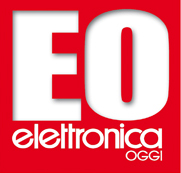How to transform recession in opportunity

Dalla rivista:
Elettronica Oggi
A new price model to remove a key barrier to designer
We are living in hard, but interesting times: in one hand the current recession is hitting hard the global economy and in the other hand the world of electronics design is changing. Definitely. So we have decided to change our business model and to transform recession in an opportunity.
Let me explain how.
First of all, we must look at the design environment.
Traditionally, electronics design is a sequential process where electronics designers use a series of disconnected point tools. This approach, which we acknowledge once worked reasonably well (albeit somewhat expensively), dramatically restricts the designer in his task of creating something that breaks through the competitive clutter.
This sequential process sees electronics designers encumbered with various interfaces, a myriad of design files and numerous design methodologies. Without a single view of the electronics design process, electronics designers are not able to break free from the design limitations of yesteryear.
So we like to think that we’re helping designers discard the now-outdated design rule book.
Altium helps by replacing this piecemeal approach with a new way of designing. Altium’s next generation electronics design solution is unified, meaning that it works off a single data model and provides a single view of the entire design process. Designing with a unified system means electronics designers can move across the hard, soft and programmable design domains. It also means that changes made in one domain are reflected within the rest of the design in real time.
This process frees electronics designers to innovate because the design process is now reversed. The functional intelligence, coupled with the best interests of the end-user, is now at the centre of the design process, courtesy of Altium’s higher-abstraction approach to programmable design. And because designers are freed from having to make an initial choice about the hardware, they can explore ideas, experiment with devices and develop rapid prototypes, all without constraint.
But there is a barrier to transform this dream in an opportunity: the price!
So we decided to set out a new manifesto, as it were, for electronics designers around the world, based on helping them remove barriers to innovation, helping them create next-generation electronic designs, and helping them not fall into the traps that recessions can sometimes conceal.
We’ve permanently reduced the price of our solutions, removing a key barrier that may have stopped electronics designers accessing everything they need to take their design concepts to market ahead of the new competitors that continue to emerge. We’re helping them plug into a continuous stream of new devices, technologies and developments that keep them at the forefront of their industry.
We believe this holistic approach to electronics design, with the user’s experience firmly at the centre of the design process, is the breakthrough organizations need.
In practice, this translates to Altium Designer now costing US$195/month, as part of a 12 month subscription, or US$3,995 for a perpetual licence.
And we believe this will serve as a low-risk path to Altium’s unified design solution, allowing more electronics designers to pioneer the new wave of connected, intelligent, next generation electronic products.
Altium has also dramatically reduced the price of its desktop NanoBoard NB2, it’s configurable development platform. The desktop NanoBoard Nb2 makes it easy to explore complex design and device tradeoffs, move functionality between hardware and software at will and rapidly develop systems with a graphical drag-and-drop, plug and play environment. All this functionalities at the amazing cost of $1.995.
Emma Lo Russo President, Altium Limited







